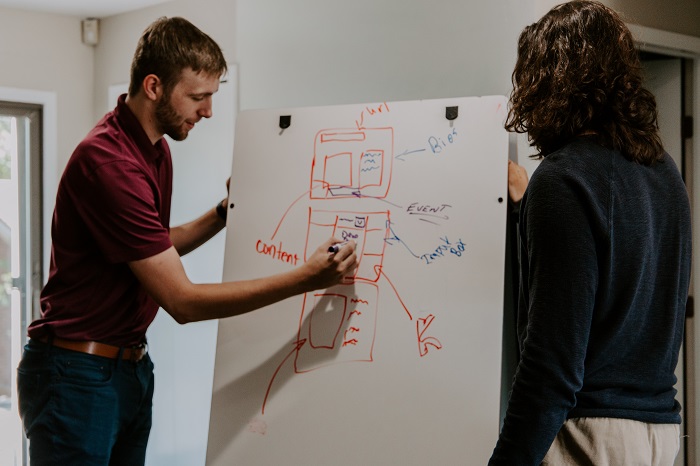

Selecting a good topic for the presentation is not enough. It is only half of the work. Of utmost importance is the presentation structure. An adequate and prefect presentation structure is a guarantee of your audience’s attention. The advantages of having a simple and structured presentation format are that your audience will feel informed and inspired. Thus they will be able to keep up with you and to follow the flow of your thought and message accurately.
Always start your presentation with a warm and energetic greeting to the audience. Introduce yourself right after the greeting. This is something you should never forget. You must give your introduction even if you are among the most familiar audience like in your classroom – where you think that all the people know you. That may not be the case. There may be someone who does not know you.
Give a short but informative introduction. Your introduction must contain the topic sentence which you will discuss later in your presentation. Make sure there are no details and examples in your introduction. State the issues and challenges that you intend to touch upon in your presentation. After this support it with a graphical or visual representation of the outline of your discussion. This helps your audience to gauge and adjust their expectations.
The main body of your presentation contains a detailed discussion of your topic. Give out handouts to keep your audience focused. This will help them keep up with you and follow your course of presentation easily and properly. It is advisable to divide your topic into different parts and discuss them one by one separately. Add charm to your presentation by giving a flashback in the form of a short summary at the end of each point. This gives a helping hand to the audience in retaining the information before moving on to the new topic. Support your ideas with visuals like diagrams, comics, statistics, graphs, and infographics, whichever is relevant. Never hurry to the next point. Give appropriate time to your audience for note-taking.
Your conclusion summarizes the central purpose of your presentation. This is where you express your point of view, sum up your findings, and help people to upgrade and update their minds about a particular issue. Mostly the audiences ignore the conclusion or do not give it a weight it deserves. This is extremely wrong as the conclusion serves the wrap up for the entire debate. In the end, after you are done with all the points in a detailed manner, do thank the audience. Then invite questions from the audience. This gives them an opportunity to fill the gaps that they feel in their understanding of your topic.
Social Taboos in The God of Small Things Below is the account of how Arundhati…
Introduction to Much Ado About Nothing This article is gives a brief but insightful Introduction…
Narrative Technique in The God of Small Things Arundhati Roy’s The God of Small Things…
Comprehensive Summary of The God of Small Things Arundhati Roy’s The God of Small Things…
The Climax and Tragic Ending in Hamlet This article explores the topic The Climax and…
Claudius as a Villain in Hamlet Claudius as a villain, the antagonist of Shakespeare’s Hamlet,…
This website uses cookies.